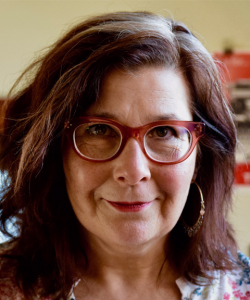Ten Questions for Nancy Krygowski

“At the heart of it, writing is about connection—to yourself, to those you love, and then, hopefully, to others.” —Nancy Krygowski, author of The Woman in the Corner
Jump to navigation Skip to content

“At the heart of it, writing is about connection—to yourself, to those you love, and then, hopefully, to others.” —Nancy Krygowski, author of The Woman in the Corner

Emma Copley Eisenberg remembers her introduction to the tarot and shares how the cards became an integral part of her writing process.

“For a while, I was most productive at night, then mornings. Now it’s just whenever there’s a moment.” —Brandon Taylor, author of Real Life

“It wasn’t until the final year or so that I felt I had some control over the shape and content, that I understood how the pieces worked together.” —Mark Bibbins, author of 13th Balloon

“I didn’t understand how important Chicago and South Shore were to me until I left.” —Gabriel Bump, author of Everywhere You Don't Belong

Feeling stuck with a work-in-progress? Mimi Lok suggests changing up an element that previously felt off limits.

“I had a substantially different version of this book that just wasn’t working, scrapped it, did that again, and then the third time was a charm.” —Charles Yu, author of Interior Chinatown

“It’s important to understand why the characters are writing to each other, what kind of language is particular to them, and what the form reveals or hides.” Mimi Lok contemplates the challenges and rewards of the epistolary form.

“The book didn’t announce itself to me until 2017, when I went looking for it. I scanned over the poems I had been writing, scanning to see what my brain had been up to without me noticing.” —Danez Smith, author of Homie

“Meditation is not a quick fix,” writes Mimi Lok. “It requires practice so that the mind gets used to stilling and quieting itself enough to listen.” In this Craft Capsule, Lok offers her method for cultivating stillness and silence.